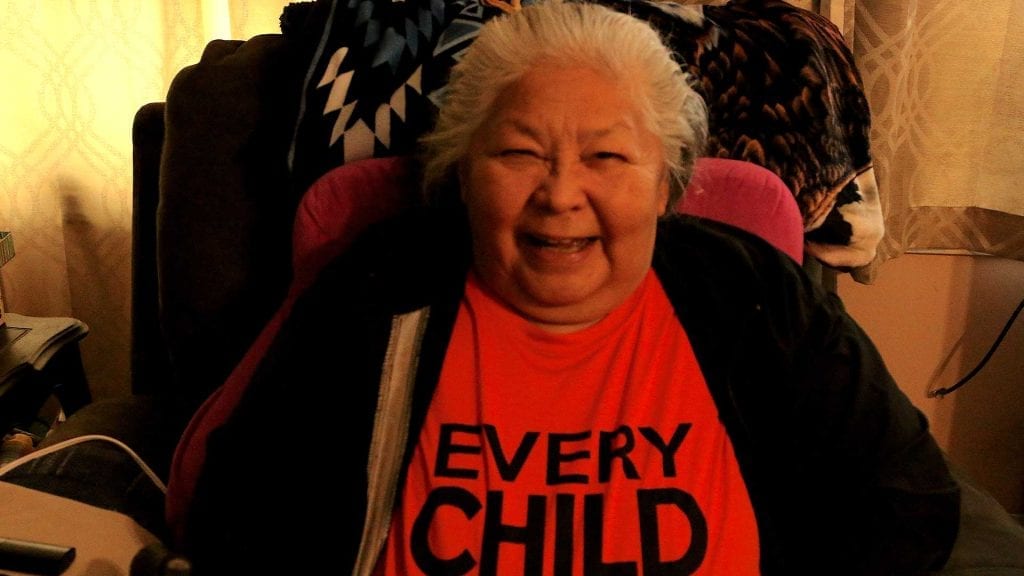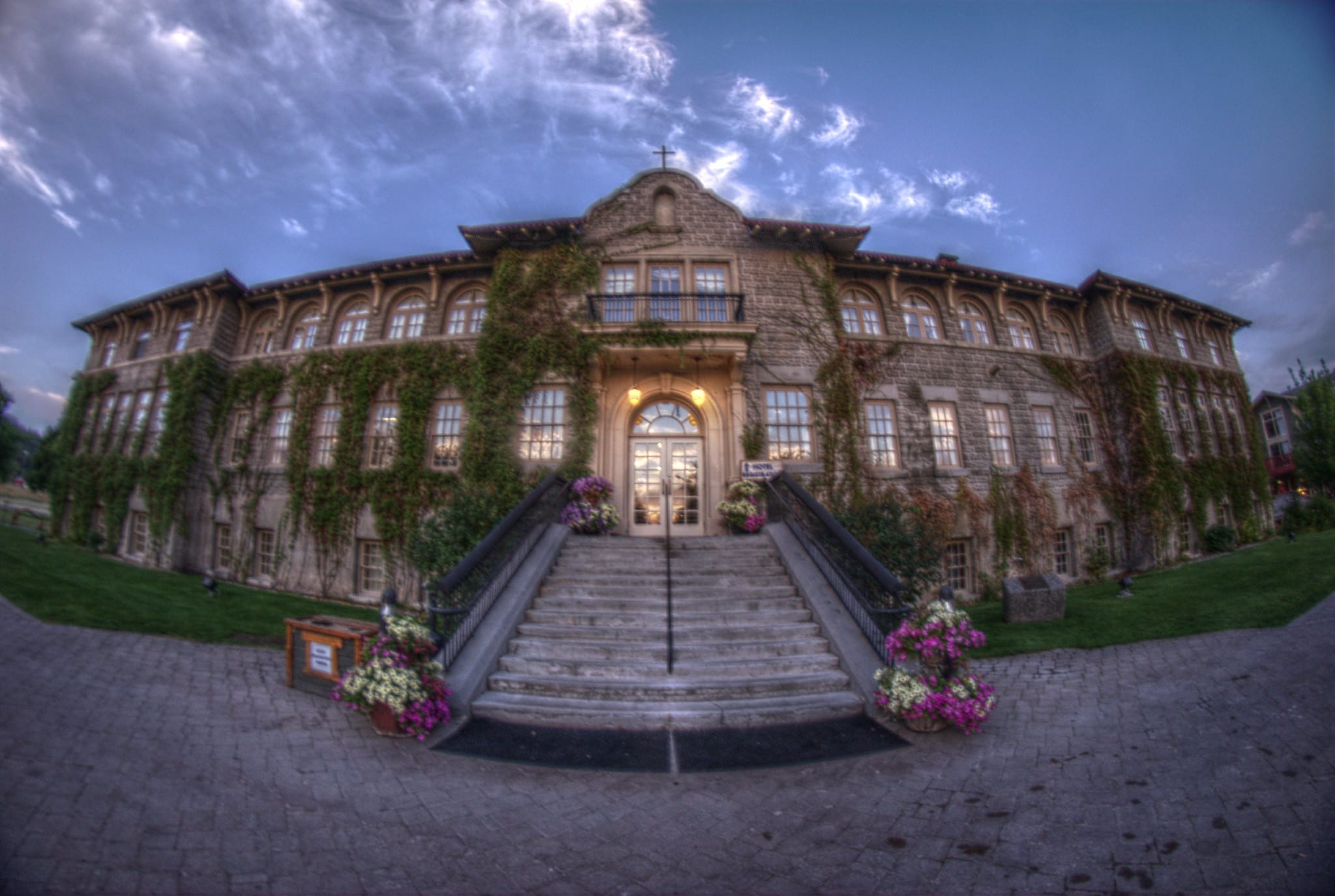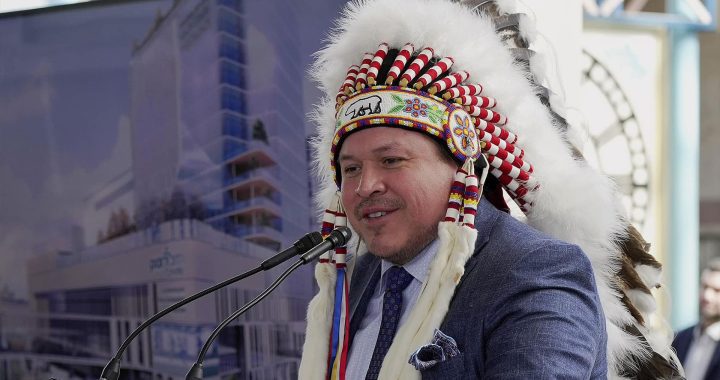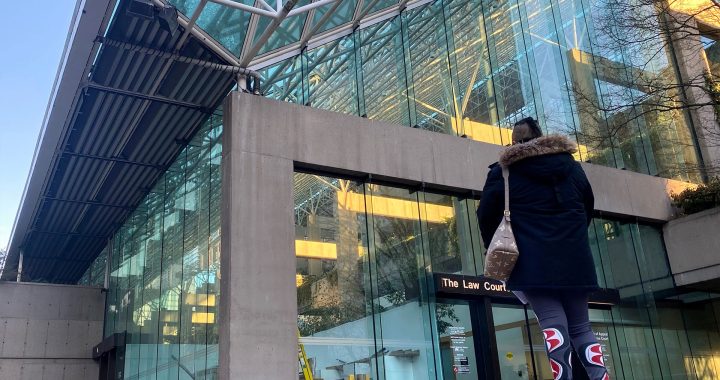
Survivor, Grace Greyeyes sitting in her home located on the Penticton Indian Band wearing her ‘every child matters’ for orange shirt day with pride on Sept 30. Photo by Athena Bonneau
Grace Greyeyes, a residential school survivor and Elder from the Penticton Indian Band, sits in her home reflecting on her childhood.
She’s wearing an orange shirt to honour her fellow residential school survivors.
“It’s an honour to wear this, for all those babies that never made it out of those schools because every child matters,” Greyeyes says.
The orange shirt refers to a shirt that Phyllis Webstad was given to her by her grandmother on her first day at St. Joseph’s Mission Residential School in British Columbia.
The date was chosen because Sept. 30 is around the time of year when Indigenous children were taken away to residential school.
“The color orange has always reminded me of that and how my feelings didn’t matter, how no one cared and how I felt like I was worth nothing. All of us little children were crying, and no one cared,” Webstad says in a post on the Orange Shirt Society website.
Webstad, a survivor and author, created Orange Shirt Day in 2013 to create awareness that every child matters and to educate Canadians about the history of the residential school system and how it impacted Indigenous communities throughout the country.
Everyone is encouraged to wear an orange shirt to recognize the cultural genocide that occurred for decades to Indigenous Peoples.
Grace Greyeyes’s journey
Greyeyes grew up in a small town called Brewster, in Washington state about 120 km south of the Canada-U.S. border and the province of B.C.
She was raised by her late father and mother, along with her 13 siblings.
Greyeyes says her parents received a letter from the Canadian government stating that if they did not send their children to residential school they would face jail time.
Residential schools were created by the Canadian government and were administered by churches. They first began operating in the 1880s and were established to remove Indigenous children from their families and assimilate them into Euro-Canadian culture.
The Greyeyes family packed their belongings, Greyeyes, only being a toddler at the time, got on a train and moved 500 km away to the City of Cranbrook in B.C.
“They sent a letter to tell them [her parents] that you have to bring them [their children] up here on a certain day and then they said, ‘if you don’t send your kids to that school, I’m going to throw you in jail,’ we had to catch a train,” Greyeyes says.
In 1948, when she was six years old, Greyeyes was sent to St. Eugene Mission Residential School, just outside of Cranbrook in southeastern B.C., along with her siblings.

“I was mad at my mom for a long time, because I thought she didn’t care about us to let us go over there,” Greyeyes says. “She told me she wanted us to get the best education, but she didn’t know what was going on.”
Between 1831 and 1996, there were over 130 residential schools operating in Canada. An estimated 150,000 children attended residential schools and approximately 6,000 children died at these schools — though accurate records of the children’s deaths still remain incomplete.
“There’s a lot of things that happened in that school, all the places where these kids have been buried, that nobody knows where,” Greyeyes explains. “So there’s a lot of unmarked graves they don’t want anyone to know about.
The residential school negatively impacted Greyeye’s young life in several ways.
“It changed me,” she says. “I was always getting smacked for something, they turned my hands blue, they had me turned them this way [palms down], and they would strap up with a long thick belt.
“There were some happy times, I made friends with some kids from the Kootenays, and they taught me how to count in Kootenay and sing a song in Kootenay.”
Greyeyes remembers the children spending each day in the conference room with a priest, to confess sins or wrongdoings.
“We had to make up lies so that they would forgive us,” she says, because they had nothing to disclose.
Greyeyes explains that apart from the physical abuse at the residential school, the sisters and priests would mentally and emotionally abuse the children making racial slurs and degrading them. Unfortunately, a few of the children experienced sexual abuse, and others went missing.
“They called us savages and they called us every nasty word you could think of, we didn’t even know they existed, they always were putting us down saying, ‘You’re never going to amount to nothing,'” Greyeyes says.
On a dark night, at the age of 12, Greyeyes says she ran away with a fellow student who had been planning to leave the residential school for months.
She explains that they went through the forest to escape and travelled all night to Cranbrook.
“The road just glowed, it glowed all the way till we got to the highway, I wasn’t even scared of the dark, I was so happy to leave that school,” she says.
After arriving in Cranbrook, Greyeyes met her sister in law, who brought her back to her family. They returned her to residential school to finish her education. Greyeyes remembers feeling angry that she had to return.
At 15, Greyeyes aged out from the residential school system and moved back home to Brewster, WA. It was a complicated process to return to school after her awful experience in residential school, however Greyeyes says she was still able to have a positive experience at a public high school in Brewster.
“The teachers protected us at the public school, they knew what that other school was doing, and after the first day I was friends with the whole damn school,” she says.
Moving forward
In 1996, the Gordon Residential School in Punnichy, Sask., the last residential school still open, closed.
The Truth and Reconciliation Commission of Canada was launched in 2008 by the parties involved in the Indian Residential Schools Settlement Agreement.
In that year, former prime minister Stephen Harper made an official apology to residential school survivors on behalf of the Canadian government.
The purpose was to recognize the Canadian government’s wrongdoings against Indigenous Peoples in Canada.
Greyeyes expresses she was mad after the apology.
“I said ‘what the hell is he apologizing to us for, It wasn’t him. It was the people that were in government then and before him.’ Yeah, don’t talk to me about me forgiving you,” she says.
As Greyeyes continues to move forward with her life, she has a message for her fellow survivors.
“I want other survivors to know and to say to themselves; it’s not your fault because we were just children.”











